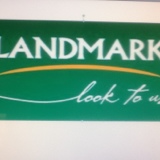Information
-
Document No.
-
Audit Title
-
Client / Site
-
Conducted on
-
Prepared by
-
Location
-
Personnel
1. Site Entrance(s)
-
Entrance Location
-
Entrance Location
Pedestrians/ Vehicles
-
Speed limit signposted
-
EXIT and ENTRANCE clearly signposted
-
Directional signage at all entrances
-
Line marking in place
-
Pedestrians segregated from vehicles, preferably separate entrances
-
Mirrors or traffic control in place to address collision points
-
After hours controls in place
2. Parking
Visitors/ Public
-
Designated parking areas in place, and are unobstructed, for all vehicles and mobile plant on site
-
Parking is clearly signposted and adequately available
-
Pedestrian access to/ from car park is safe and avoids crossing traffic (e.g. Walkways provided or marked)
-
Temporary parking locations are identified and hazards are addressed (e.g. Contractor access to tools)
-
On-site parking areas communicated to drivers (e.g. map and site rules provided)
3. Deliveries/ Couriers
-
Parking areas for deliveries/ couriers are designated
-
Persons required to enter site beyond reception provided with induction/ site rules/ directions for movement whilst on site, including un/loading rules
-
Entry to restricted areas signed and controlled
-
Visitors accompanied around site
4. Pedestrian & Vehicular Traffic Routes Outside Buildings
-
Segregation of pedestrians and vehicles, preferably barricaded
-
Traffic flow assessed and actions to reduce flow in high risk areas e.g. reschedule deliveries, alter routes
-
Blind spots identified and controlled e.g. use of mirrors or warning signage or lights
-
Vehicles to sound horn when exiting a building or round a blind spot
-
"Right of way" agreed and communicated around site
-
Speed limit enforced
5. Pedestrian & Traffic Routes Within Building(s)
-
Segregation of pedestrians and vehicles, physical barriers
-
Pedestrians must not be within 3 meters of manoeuvring mobile equipment
-
Blind spots identified and controlled e.g. use of mirrors or lights
-
Speed limit signposted and enforced
-
Crossings assigned where regular pedestrian access is required, including use of inward swinging gates
6. Truck un/ loading
-
Designated area/s for all un/ loading
-
Pedestrian must not be within 3 meters of manoeuvring mobile equipment (e.g. driver in safety zone)
-
Systems to stop truck moving during un/ loading
-
Process in place for pedestrians to approach stationary equipment won't move
-
Site processes communicated to drivers
-
Control of keys for all vehicles in place
-
Forklift drivers given authority and knowledge to stop and act
-
Hazard lights used when moving vehicle
7. Warehouse
Vehicular aisles, pedestrian walkways and un/loading areas
-
Pedestrian segregation
-
Traffic flow designated
-
Height and location of storage items does not impede visibility
-
Restricted access to area
-
Procedure for times of pedestrian access (e.g. stocktake)
8. Production Areas (e.g. loading material onto machine)
Receiving raw materials & moving finished product
-
Designated and placarded loading areas and procedures
-
Segregation of the location for high pedestrian and high traffic activities
-
Designated 'no mobile equipment' areas
-
Vehicle right of way decided and communicated
9. Forklift Operation
-
Authorised operations only (e.g. control of keys and company specific training undertaken
-
Speed limited, where possible
-
Drivers sound horns when exit/ enter building or around blind/ difficult spots
-
Right of way process understood by all and enforced
-
Designated parking bays provided
-
Exclusion zone of 3 metres from pedestrians when operating
-
Process for pedestrians to approach includes ignition off and park brake on
10. Other Mobile Equipment
-
Authorised use
-
Restricted areas
-
High loads given consideration of power lines
-
Attachments have certification and operator trained in use
-
Other, per local circumstances
11. Equipment Maintenance
Programmed/ scheduled or Reactive
-
Pre-start and routine checks performed
-
Process for ad hoc maintenance
12. Maintenance/ Contractor Activities
Moving around site & storage of materials
-
Contractor movements communicated to key area staff prior to arrival
-
Contractors supervised and or activity monitored regularly
-
Contractor induction including site traffic rules
13. Site General Traffic Rules
Speed limits, right of way, restrictions & direction of travel
-
Communicated to all persons on site
-
Enforced
-
Allocation of responsibilities
14. Informational Signage & Line Marking
External on site & internal in buildings
-
All signage in good condition
-
Adequate for the area and risks (e.g. Crossings, walkways, speed limit signage & access signage)
15. Yard Storage Areas
Direction of travel
-
Storage of excess stock not in loading areas, walkways or any thoroughfare
-
Speed limit
-
Restricted area access
16. Main Crossings/ Intersections & Right of way
Speed controls
-
Zebra crossing
-
Pedestrian segregation
-
Speed limited
-
Inwards swinging gates
-
Additional controls for high risk collision areas (e.g. Lights)
17. Handling Hazardous Materials or Wastes
Movement out of production areas & movement around site
-
Spill/ contamination controls in place (e.g. bunding, spill kit)
-
Restricted areas
18. Hazard Reporting & Tagging Out Equipment/ Areas
-
Faulty equipment stopped and tagged out
-
Equipment checked for faults frequently
Site-Wide Issues
-
Street and site wide traffic flow (e.g. adequacy of parking spaces for waiting trucks)

















